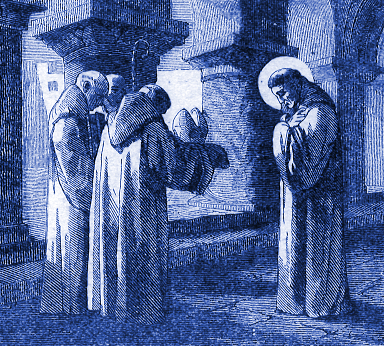Lives of the Saints
Our Models and Protectors
Spiritual Bouquet:
April 29

Saint Hugh
Abbot of Cluny
(1024-1109)
Saint Hugh was a prince related to the sovereign house of the dukes of Burgundy, and received his education under the tutelage of his pious mother and by the solicitude of Hugh, Bishop of Auxerre, his great-uncle. From his infancy he was given to prayer and meditation, and his life was remarkably innocent and holy.
One day, hearing an account of the wonderful sanctity of the monks of Cluny under Saint Odilo, he was so moved that he set out at that moment, and going there humbly begged the monastic habit. After a rigid novitiate, he made his profession in 1039, at the age of sixteen years. His extraordinary virtue, especially his admirable humility, obedience, charity, sweetness, prudence, and zeal, gained him the respect of the entire community.
At the death of Saint Odilo in 1049, though Saint Hugh was only twenty-five years old, he succeeded to the government of that great abbey, which he continued for sixty-two years. During those years, the role of Cluny was immense. From it came two very illustrious Popes, Urban II and Pascal II, both disciples of Saint Hugh. The king of Castille, Alphonsus VI, owed his deliverance from an imprisonment to the prayers and intervention of Saint Hugh. A count of Macon entered the monastery with thirty knights and a great many servants, while the countess, his wife, retired to a convent founded by Saint Hugh. Donations of large terrains were made to this Abbey, permitting innumerable foundations. Urban II gave Saint Hugh the right to wear pontifical ornaments for the solemn feast days.
Saint Hugh of Cluny died on the twenty-ninth of April, in 1109, at the age of eighty-five years. He was canonized twelve years after his death by Pope Calixtus II.
Les Petits Bollandistes: Vies des Saints, by Msgr. Paul Guérin (Bloud et Barral: Paris, 1882), Vol. 5; Little Pictorial Lives of the Saints, a compilation based on Butler's Lives of the Saints and other sources by John Gilmary Shea (Benziger Brothers: New York, 1894).